When you think of incredible journeys, you might picture epic road trips or long flights, but some of the most awe-inspiring travels happen in the animal kingdom. From tiny insects to massive mammals, creatures around the world embark on migrations that defy imagination. You might not have the chance to witness all of these migrations firsthand, but each one has its own fascinating quirks and challenges. So, let’s dive into some of the most remarkable animal migrations that will make you appreciate the wonders of nature even more. Whether you’re an animal enthusiast or just curious about the natural world, this list is sure to inspire.
1. Monarch Butterfly

Imagine traveling thousands of miles without a GPS or map. That’s what the monarch butterfly does every year as it migrates from Canada and the United States to central Mexico. This tiny insect, weighing less than a penny, covers about 3,000 miles to reach its wintering grounds. According to Dr. Chip Taylor, founder of Monarch Watch, monarchs use a combination of environmental cues like the sun and Earth’s magnetic fields to navigate these long distances. Watching them flutter through the sky in massive groups is not only stunning but also a testament to nature’s resilience.
Yet, monarch butterflies face numerous threats that make their annual trek more challenging. Habitat loss and climate change are major concerns, as they disrupt the butterflies’ breeding and wintering locations. Conservation efforts are crucial to ensure that these orange and black beauties continue their incredible journey. People can help by planting milkweed, the only plant monarch larvae consume, and by advocating for policies that protect their habitats. Supporting these efforts means you’re a part of preserving one of the most captivating natural spectacles.
2. Wildebeest Migration
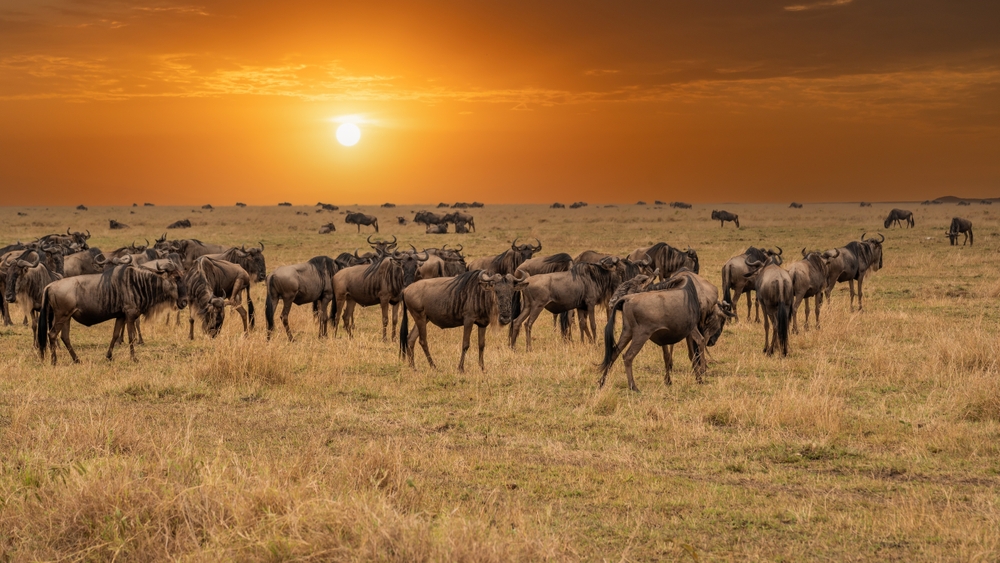
The wildebeest migration is perhaps one of the most dramatic and well-documented migrations on the planet. Each year, over a million wildebeest, accompanied by zebras and gazelles, move in a circular route through the Serengeti in Tanzania and the Maasai Mara in Kenya. This epic journey, known as the Great Migration, is driven by the search for fresh grazing and water. It’s a perilous trip, with predators like lions, crocodiles, and hyenas lurking at every turn, waiting for the chance to pounce. Witnessing the river crossings, where animals brave swift currents and hungry crocodiles, is something you won’t forget.
The migration isn’t just a spectacle; it’s a crucial part of the ecosystem. As the wildebeest move, they help maintain the grasslands by grazing and fertilizing the soil with their droppings. This, in turn, supports a variety of other wildlife, from birds to larger herbivores. However, human activities such as agriculture and infrastructure development pose threats to this natural event. Efforts to conserve these migration paths ensure that they remain for future generations to marvel at. By supporting conservation initiatives, you’re not just preserving a migration, but an entire way of life for an ecosystem.
3. Arctic Tern
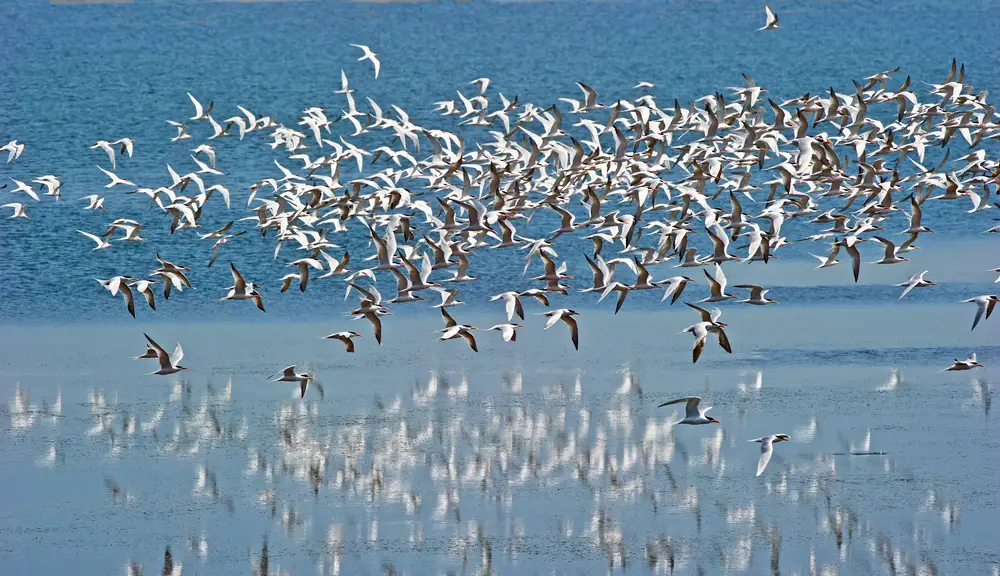
The Arctic tern is the champion of long-distance migration, traveling from its breeding grounds in the Arctic to Antarctica and back each year. This bird covers a staggering distance of about 44,000 miles annually, seeing more daylight than any other animal on the planet. Its route varies, allowing it to take advantage of prevailing wind patterns and food availability. Research conducted by ornithologist Richard Phillips and his team has provided detailed insights into the tern’s migration routes using small tracking devices. The Arctic tern’s journey is a testament to endurance and the intricacies of avian navigation.
Despite its impressive journey, the Arctic tern faces challenges that threaten its survival. Climate change is a significant concern, affecting food sources and nesting sites. Additionally, human disturbances in breeding areas can lead to reduced breeding success. Conservation efforts focus on protecting breeding grounds and mitigating the impacts of climate change. By understanding and supporting these efforts, you can help ensure that the Arctic tern continues its awe-inspiring journey across the globe.
4. Humpback Whale
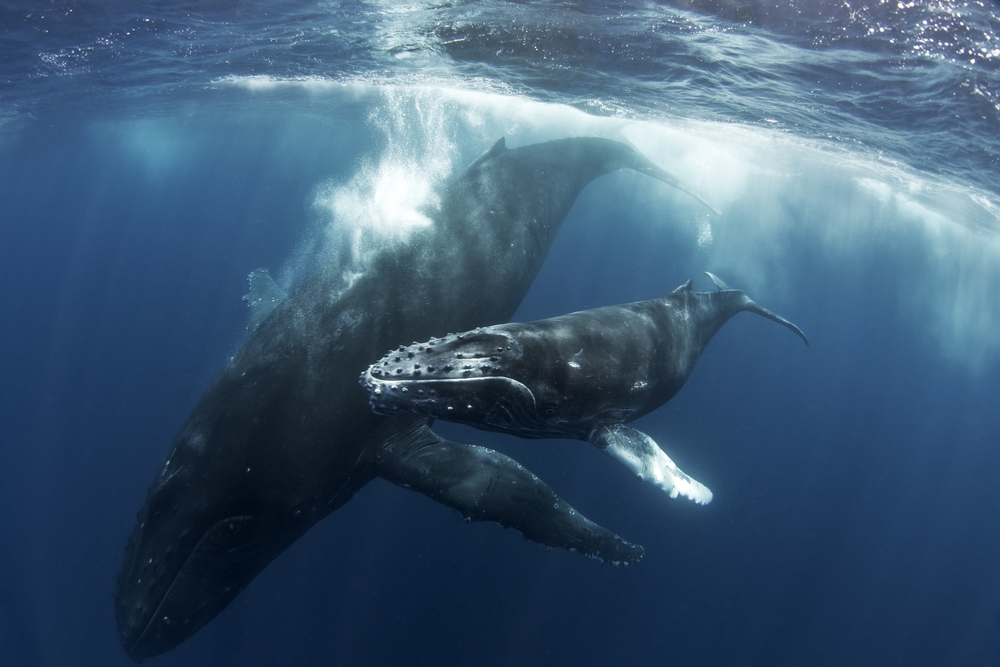
Humpback whales make one of the longest migrations of any mammal, traveling up to 5,000 miles from feeding grounds in polar waters to breeding grounds in tropical waters. These massive creatures, known for their acrobatic breaches and complex songs, follow a predictable route each year. During the summer, they feed in nutrient-rich polar waters, building up fat reserves for their journey. As winter approaches, they migrate to warmer tropical waters to mate and give birth. This migration is critical for their life cycle and highlights the incredible adaptability of these marine giants.
The journey of the humpback whale is not without its risks. Threats like ship strikes and entanglement in fishing gear pose significant dangers to these gentle giants. Moreover, climate change impacts their food supply, making it harder for them to build the energy reserves needed for migration. Conservation efforts focus on reducing ship strikes, protecting critical habitats, and addressing climate change. By supporting these initiatives, you play a role in ensuring that humpback whales continue to grace our oceans with their majestic presence.
5. Caribou
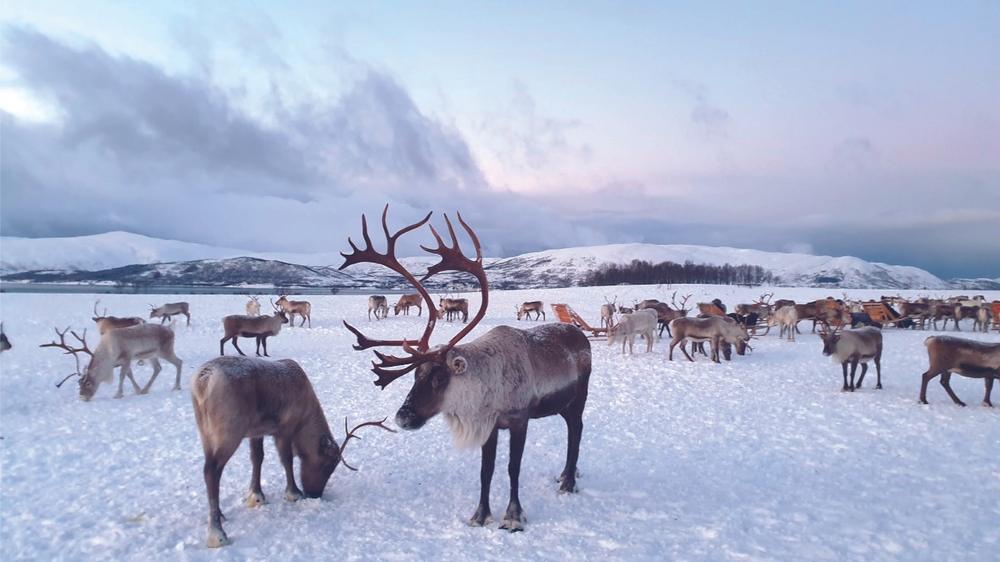
Caribou, known as reindeer in Europe, embark on one of the longest-distance terrestrial migrations in North America. Each year, they travel up to 3,000 miles across the Arctic tundra in search of food and calving grounds. The migration is not only a journey for survival but also a spectacle of natural endurance and the changing seasons. Biologist Anne Gunn has studied caribou for decades, revealing the importance of their migration for Arctic ecosystems. Watching a herd of thousands move across the landscape is a reminder of nature’s incredible adaptability.
However, the caribou’s journey is increasingly under threat from climate change and human activities. Warmer temperatures affect the availability of their food sources and disrupt traditional migration routes. Additionally, industrial developments such as oil extraction and mining pose barriers and disturbances to their paths. Conservation efforts are vital to protect these incredible migrations and ensure the survival of caribou populations. By supporting these efforts, you contribute to the preservation of not just a species, but a critical part of the Arctic ecosystem.
6. Leatherback Sea Turtle
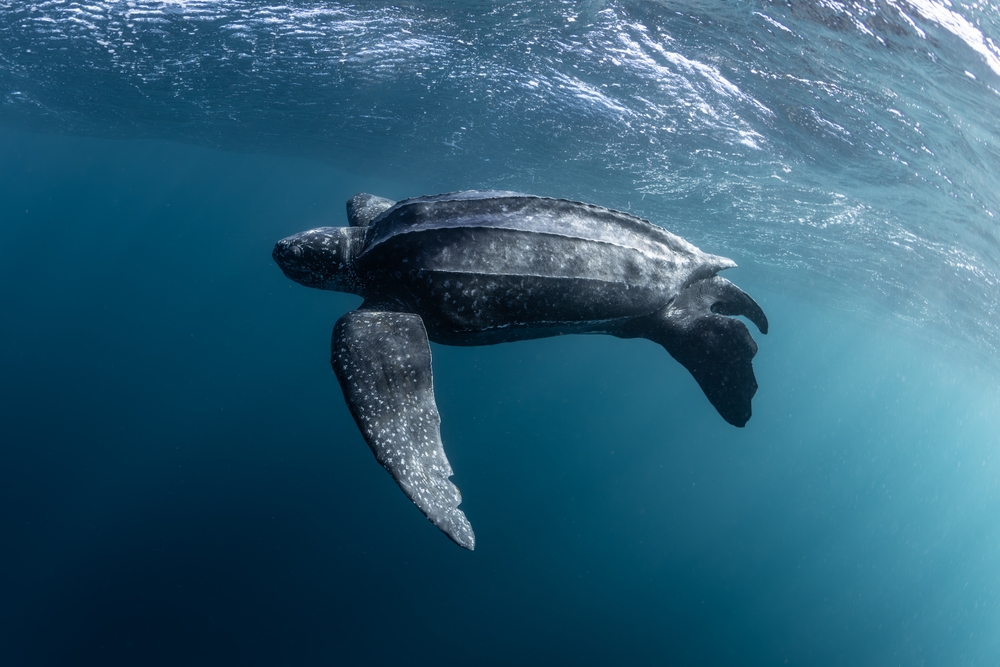
Leatherback sea turtles are remarkable for their extensive migratory journeys across the oceans. These ancient reptiles travel thousands of miles between their nesting and feeding grounds, navigating the vast and often perilous sea. Unlike other turtles, leatherbacks have a more flexible shell, allowing them to dive deeper and travel farther. They feed primarily on jellyfish, which are found in abundance in the open ocean, driving their long migrations. Watching a leatherback nest on a beach is a profound experience that connects you to the ancient rhythms of the sea.
Yet, leatherback sea turtles face numerous threats that impact their migration and survival. Poaching of eggs, bycatch in fisheries, and plastic pollution are significant challenges these turtles encounter. Climate change also affects nesting beaches and food availability, further threatening their populations. Conservation efforts focus on protecting nesting sites, reducing bycatch, and mitigating pollution. By supporting these initiatives, you help ensure that leatherback turtles can continue their epic journeys across the oceans.
7. American Bison
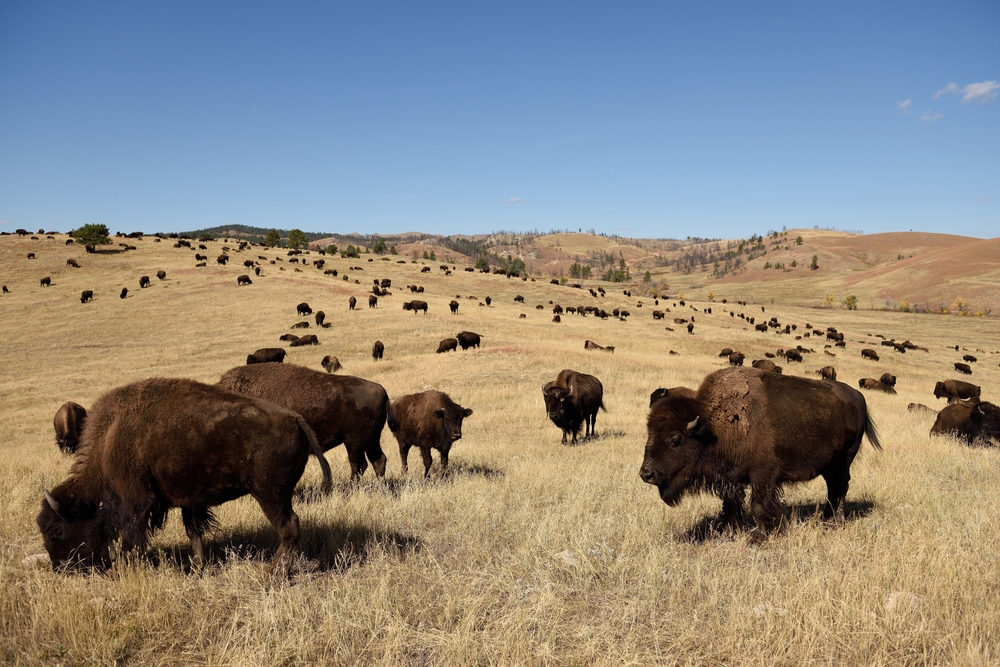
The American bison, once nearly driven to extinction, now embarks on important migrations across the plains of North America. These migrations, while not as extensive as others, play a crucial role in maintaining the health of prairie ecosystems. According to ecological studies by Dr. Wes Olson, bison help shape the landscape through their grazing patterns, which promote plant biodiversity. They also provide habitat for other species and contribute to nutrient cycling. Observing a herd of bison on the move underscores the importance of their role in the ecosystem.
Despite their comeback, bison migrations face obstacles that threaten their future. Habitat fragmentation, fencing, and human-wildlife conflicts pose significant challenges to their movement. Efforts to reintroduce bison to native grasslands and create wildlife corridors are essential for their continued survival. By understanding and supporting these conservation initiatives, you contribute to the restoration of one of North America’s most iconic species. Ensuring the survival of bison migrations helps preserve the ecological richness of the prairies.
8. Salmon
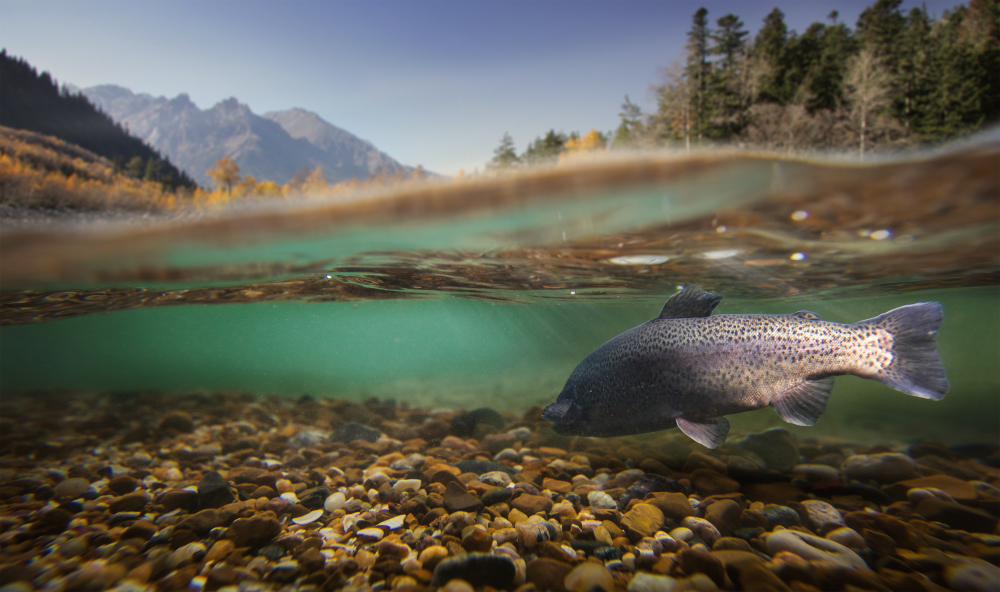
The migration of salmon is one of nature’s greatest spectacles, as these fish undertake an arduous journey from the ocean back to their freshwater birthplace. This incredible feat is driven by their instinct to spawn and complete their life cycle. Salmon use their keen sense of smell and environmental cues to navigate thousands of miles upstream, overcoming obstacles like rapids and waterfalls. The journey is perilous, with predators like bears and eagles waiting at various points along the way. Witnessing salmon leap upstream is an unforgettable experience that highlights their determination and strength.
The salmon migration is vital not only for their reproduction but also for the ecosystems they support. As salmon return to spawn and die, they bring essential nutrients from the ocean back to freshwater environments. This nutrient transfer supports a wide range of wildlife and plant life, making salmon a keystone species. However, human activities like dam construction and pollution severely threaten salmon populations. Conservation efforts focus on restoring river habitats and managing fisheries to ensure salmon migrations continue. By supporting these efforts, you help sustain the ecological balance they bring.
9. Zebra Migration
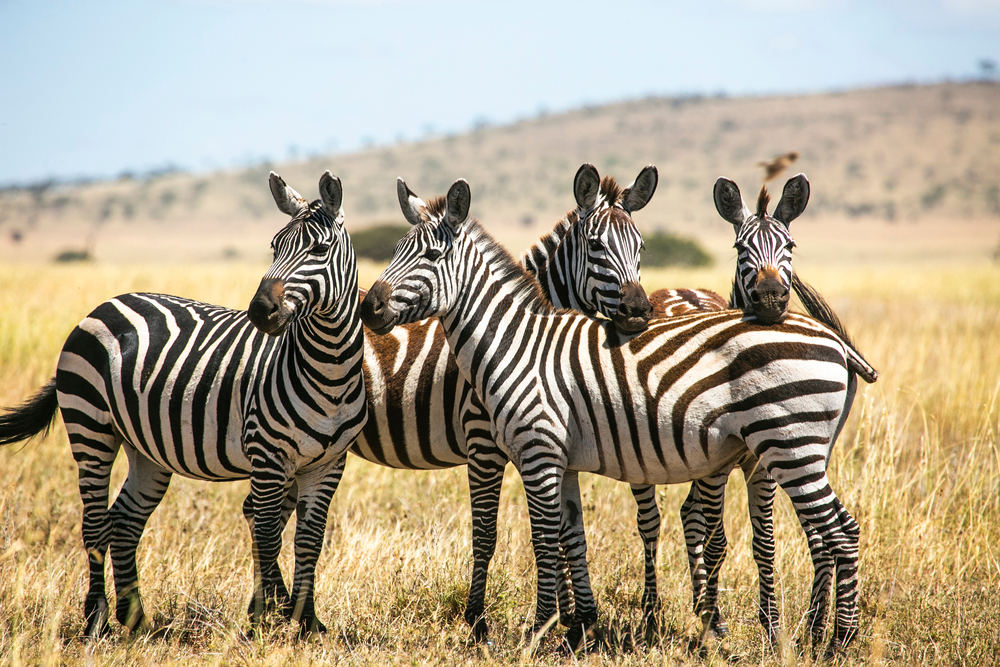
The zebra migration is a lesser-known but equally impressive spectacle that occurs in Botswana’s Makgadikgadi and Nxai Pan National Parks. Each year, thousands of zebras undertake a 300-mile round-trip journey in search of greener pastures and water. This migration is driven by the seasonal rains, which transform the arid landscape into a lush oasis. Zebras follow ancient routes, passing through areas teeming with predators and other challenges. Observing the zebra migration offers a glimpse into the dynamic and interconnected nature of African ecosystems.
While the zebra migration is an awe-inspiring event, it faces numerous threats that could disrupt the cycle. Human encroachment, fencing, and climate change are significant factors that can alter migration routes and access to resources. Conservation efforts aim to preserve migratory corridors and protect critical habitats from development. By supporting these initiatives, you help ensure that zebras continue their age-old journey across the plains. Preserving this migration not only benefits zebras but also maintains the biodiversity of the region.
10. Red Crab Migration
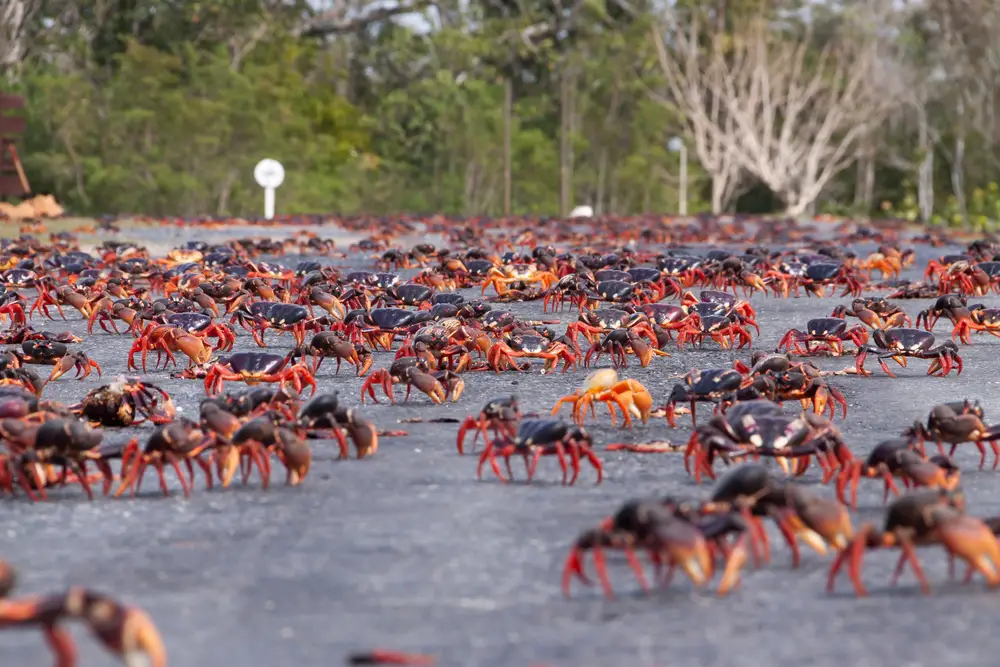
Every year, millions of red crabs perform a spectacular migration on Christmas Island in the Indian Ocean. At the onset of the rainy season, adult crabs leave their forest homes and head to the coast to breed and release their eggs into the sea. This migration transforms the landscape, as roads and paths become a sea of crimson. The crabs’ synchronized movement is a marvel of natural timing, driven by lunar cycles and environmental cues. Watching this mass migration is like witnessing a living carpet of red crawl across the island.
Despite its mesmerizing beauty, the red crab migration faces challenges that threaten its continuation. Habitat loss due to human development and invasive species like the yellow crazy ant pose serious threats to crab populations. Conservation efforts focus on controlling ant populations and protecting key habitats to ensure the crabs’ safe passage to the sea. By supporting these initiatives, you contribute to the preservation of one of nature’s most unique and visually striking migrations. Ensuring the survival of red crabs helps maintain the delicate balance of Christmas Island’s ecosystem.
11. Snow Geese

Each autumn, snow geese undertake an impressive migration from their breeding grounds in the Arctic tundra to their wintering grounds in the southern United States and Mexico. This journey covers thousands of miles, with flocks numbering in the thousands creating awe-inspiring formations in the sky. The geese rely on well-established flyways and stopover points to rest and refuel along the way. Their migration is a testament to their incredible navigation skills and the communal strength of their flocks. Witnessing a sky filled with snow geese is a breathtaking reminder of the wonders of avian migration.
Snow geese play an important role in the ecosystems they inhabit during their migration. Their feeding habits help shape wetland and agricultural landscapes, influencing plant and animal communities. However, changes in land use and climate can impact their migration routes and stopover habitats. Conservation efforts focus on protecting key habitats and maintaining the health of flyway ecosystems. By supporting these efforts, you help ensure the continued success of snow geese migrations and the ecological benefits they bring.
12. Dragonfly Migration

Dragonfly migration is a fascinating phenomenon that occurs on multiple continents, with these agile insects traveling long distances across oceans and land. One of the most well-known migratory species is the globe skimmer, which embarks on a transoceanic journey covering up to 11,000 miles. Unlike birds, dragonflies rely on wind patterns to assist their migration, taking advantage of favorable conditions to conserve energy. Their migration is a spectacular display of endurance and adaptability, showcasing the power of tiny wings. Observing dragonflies en masse during migration is a reminder of the diverse and intricate patterns of nature.
Despite their resilience, dragonflies face challenges that threaten their migratory success. Habitat loss, pollution, and climate change can impact their breeding and feeding grounds, disrupting migration patterns. Conservation efforts focus on protecting wetland habitats and reducing pollution to support healthy dragonfly populations. By supporting these initiatives, you help preserve the complex web of life these small but mighty insects rely on. Ensuring the survival of dragonfly migrations contributes to the health of ecosystems worldwide.
13. Bar-Headed Goose
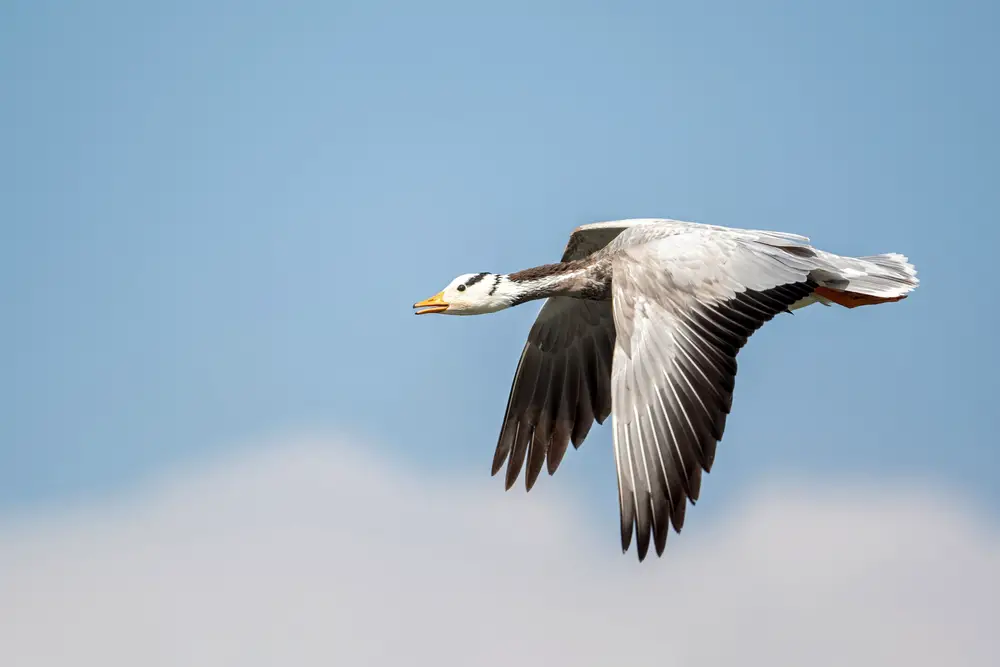
Bar-headed geese are renowned for their incredible high-altitude migration over the Himalayas, one of the world’s most formidable mountain ranges. These geese fly at altitudes of over 29,000 feet, where oxygen levels are low and temperatures are frigid. Their journey from breeding grounds in Central Asia to wintering areas in South Asia is a testament to their physiological adaptations. The geese have specialized hemoglobin that allows them to efficiently utilize oxygen even at high altitudes. Watching a flock of bar-headed geese soar above the peaks is an awe-inspiring sight that challenges our understanding of animal endurance.
The migration of bar-headed geese is not without its challenges. Changing climate patterns and habitat loss threaten their stopover sites and wintering grounds, impacting their survival. Conservation efforts focus on protecting these critical habitats and understanding the impact of environmental changes on their migration. By supporting these initiatives, you help ensure that bar-headed geese continue to grace the skies with their remarkable high-altitude journeys. Preserving their migration is crucial for maintaining the balance of mountain and wetland ecosystems.
14. Sooty Shearwater
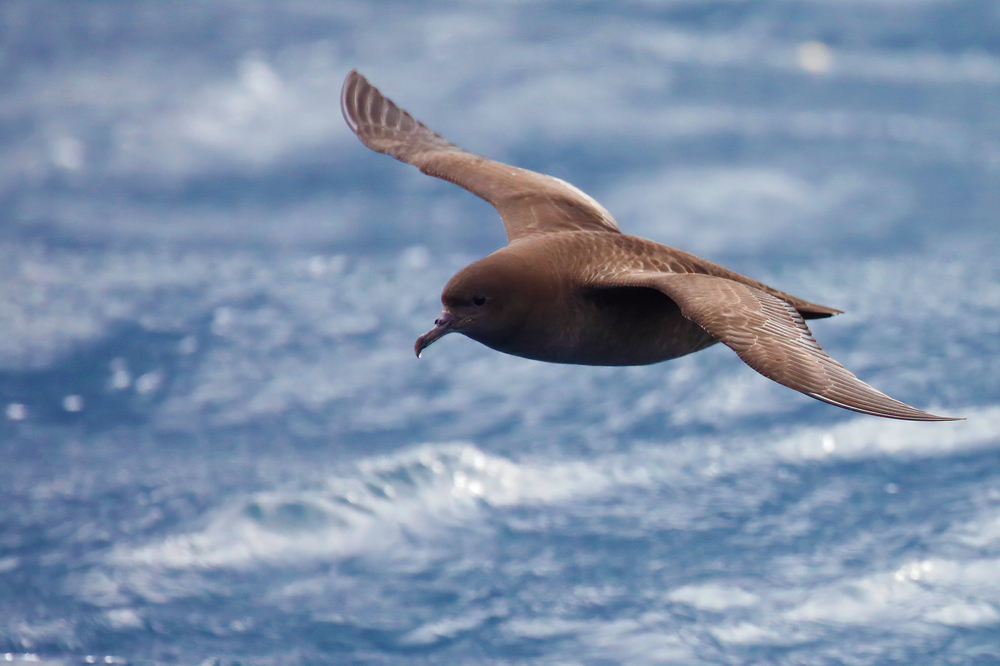
Sooty shearwaters undertake one of the longest migrations of any animal, flying an estimated 40,000 miles each year. These seabirds travel from their breeding colonies in New Zealand and the Falkland Islands to feeding grounds in the North Pacific Ocean. Their migration is a remarkable feat of endurance, as they follow a figure-eight pattern that takes them across the equator twice. Sooty shearwaters rely on oceanic currents and wind patterns to aid their long journey. Observing these birds glide effortlessly over the ocean is a testament to their mastery of the skies.
Despite their remarkable migration, sooty shearwaters face threats that impact their survival. Overfishing, pollution, and climate change affect the availability of their food sources and nesting areas. Conservation efforts focus on sustainable fishing practices and protecting marine habitats to support shearwater populations. By supporting these initiatives, you help ensure that sooty shearwaters continue their epic journeys across the globe. Preserving their migration is essential for the health of ocean ecosystems and the species that depend on them.
15. Great White Shark
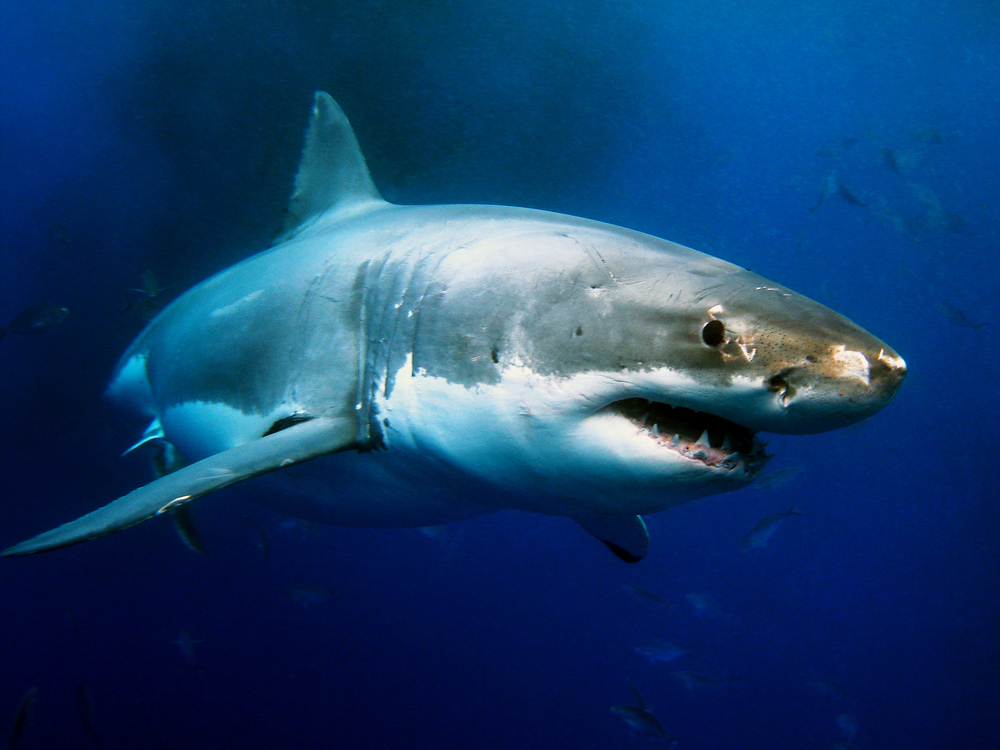
Great white sharks are known for their formidable presence in the ocean, but they also undertake impressive migratory journeys. These apex predators travel thousands of miles across the open ocean, often between feeding grounds and breeding sites. Their migration patterns are complex and influenced by factors such as prey availability and water temperature. Great white sharks are equipped with exceptional navigational skills, using the Earth’s magnetic fields and other cues to traverse vast distances. Observing a great white in its natural habitat is a humbling experience that highlights the ocean’s majesty.
The migration of great white sharks is crucial for their life cycle and the balance of marine ecosystems. These top predators help regulate prey populations, maintaining the health of ocean habitats. However, great white sharks face threats from illegal fishing, habitat degradation, and climate change. Conservation efforts focus on protecting critical habitats and promoting sustainable fishing practices to ensure their survival. By supporting these initiatives, you contribute to the preservation of one of the ocean’s most iconic and essential species.
